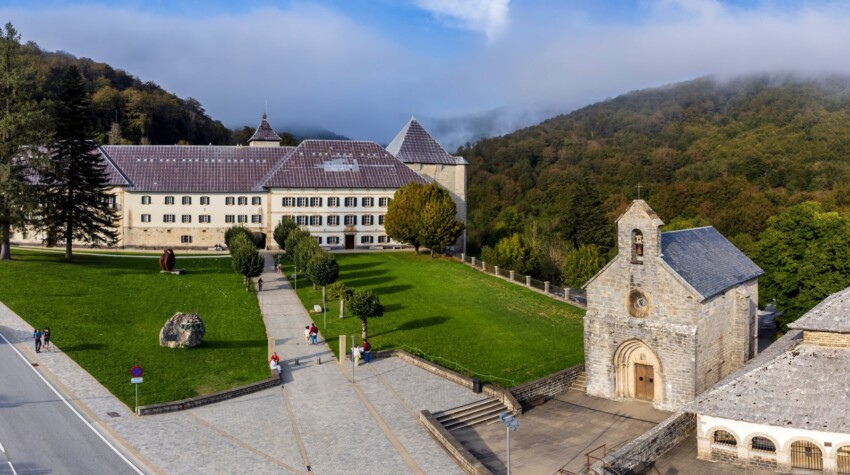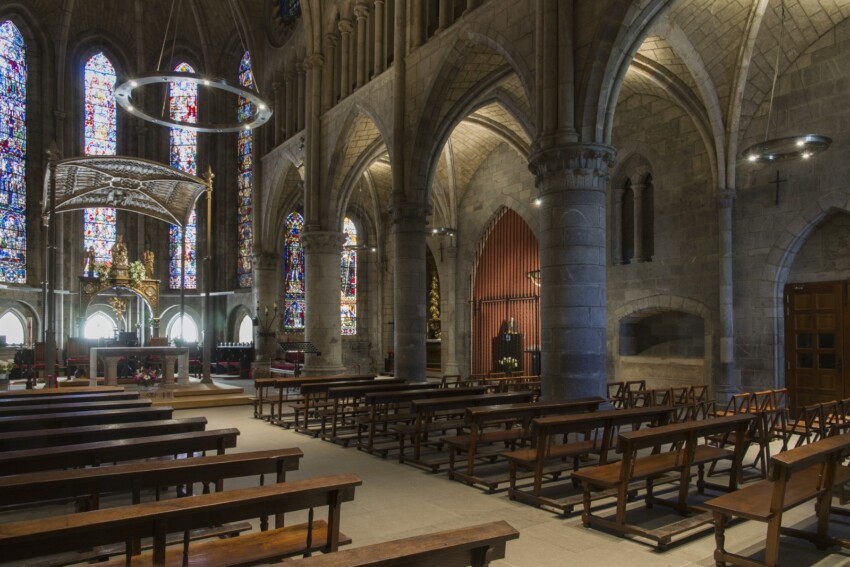

Roncesvalles is but a tiny village of 30 inhabitants, yet it enjoys international fame. The name of this small town in the Spanish Pyrenees a few kilometres from the French border is inextricably linked to two things: the Pilgrim’s Way to Santiago and Charlemagne.
Roncesvalles is the arrival point of the first stage of the Camino de Santiago for those who choose the classic route that begins on the other side of the Pyrenees, in the French town of Saint-Jean-Pied-de-Port. The crossing of the mountains is difficult, so many pilgrims and hikers decide to skip this section and start their journey precisely from Roncesvalles.
Both as a point of arrival and departure – but also as the destination of a day trip from Pamplona – Roncesvalles is a unique place to visit, pervaded by a timeless atmosphere in which historical events, myths and legends that have forged the European collective imagination echo.
A decisive battle for the fate of Europe was fought on its lands: the Pyrenean pass of Roncesvalles was the scene of Charlemagne’s historic defeat in 778. A real event that we, however, know in the romantic version of the literary tradition of the Chanson de Roland and other epic novels.
The landscapes around Roncesvalles are breathtakingly beautiful, both when the sun lights them up with warm hues and when they are shrouded in fog or covered by a white blanket of snow. Walking along the paths and lanes, it will not be difficult for you to imagine the noble Roland, Paladin of France, performing his last heroic deeds before his death.
Exciting, romantic, evocative, at times even moving: Roncesvalles is a place not to be missed.

Roncesvalles is visited more for its epic atmosphere and historical importance than for its cultural attractions. This does not mean that there are not interesting things to see: this small village hides some masterpieces.
Roncesvalles’ top attraction is the Royal Collegiate Church, a magnificent Gothic church originally built in the 13th century to welcome pilgrims arriving from the Pyrenean crossing; unfortunately, the church was damaged by fire and was rebuilt in the 15th century.
However, it is the first Gothic church built in Spain and the rite of the pilgrim’s blessing with sung vespers is still held every day. The statue behind the high altar depicts St Mary of Roncesvalles: according to legend, the Virgin appeared announced at night by a deer on whose horns rested two shining stars.
Don’t miss the Museum-Treasury of the Royal Collegiate Church of Roncesvalles, which exhibits an interesting collection of sacred art objects, jewellery, paintings, sculptures and an ancient manuscript book. The highlight of the collection is the so-called Charlemagne’s Chessboard: don’t be fooled by the name, it is a reliquary from the 14th century. Other interesting pieces are a silver evangelarium in Romanesque style and a Gothic-Mudejar chest.
Then enter the nearby Chapel of St. Augustine to see the tomb of a giant Navarrese king over two metres tall and the chains of a Muslim king he defeated near Toulouse. These images can be found in today’s coat of arms of the region of Navarre.
Not far from the Royal Collegiate Church complex is also the place where, according to legend, Roland died or was buried: it is a quadrangular crypt known as the Capilla di Sanctii Spiritus.

There are only two lodgings in Roncesvalles and they are both designed for pilgrims making the Pilgrim’s Way to Santiago: they are cheap hostels with huge dormitories, which are not very comfortable and therefore not very suitable for a relaxing holiday.
However, if you go a couple of kilometres from the centre of Roncesvalles, you will find some accommodation for tourists: nice hotels, rural houses, small pensions and even some comfortable flats. It is advisable to book in advance because the availability of rooms is not high.
Most visitors come to Roncesvalles on foot from the French town of Saint-Jean-Pied-de-Port, which is about 25 km away.
You do not have to undertake a long walk with a considerable difference in altitude: you can reach Roncesvalles from Pamplona by taking a direct bus. Pay attention to the timetable: outside the summer and Easter period, there are no runs on Sundays and public holidays.
The bus journey time from Pamplona to Roncesvalles is approximately one hour. On days when the bus is not in service you can take a direct taxi, but it will cost you about 60 euros.
Getting to Roncesvalles from other cities is more difficult: there are connections with the main cities, but the rides are very infrequent so you need to organise your journey well.
If, on the other hand, you travel by car, you will have no difficulty getting to Roncesvalles: the town is located along the national road N-135, follow the signs for Orreaga/Roncesvalles.